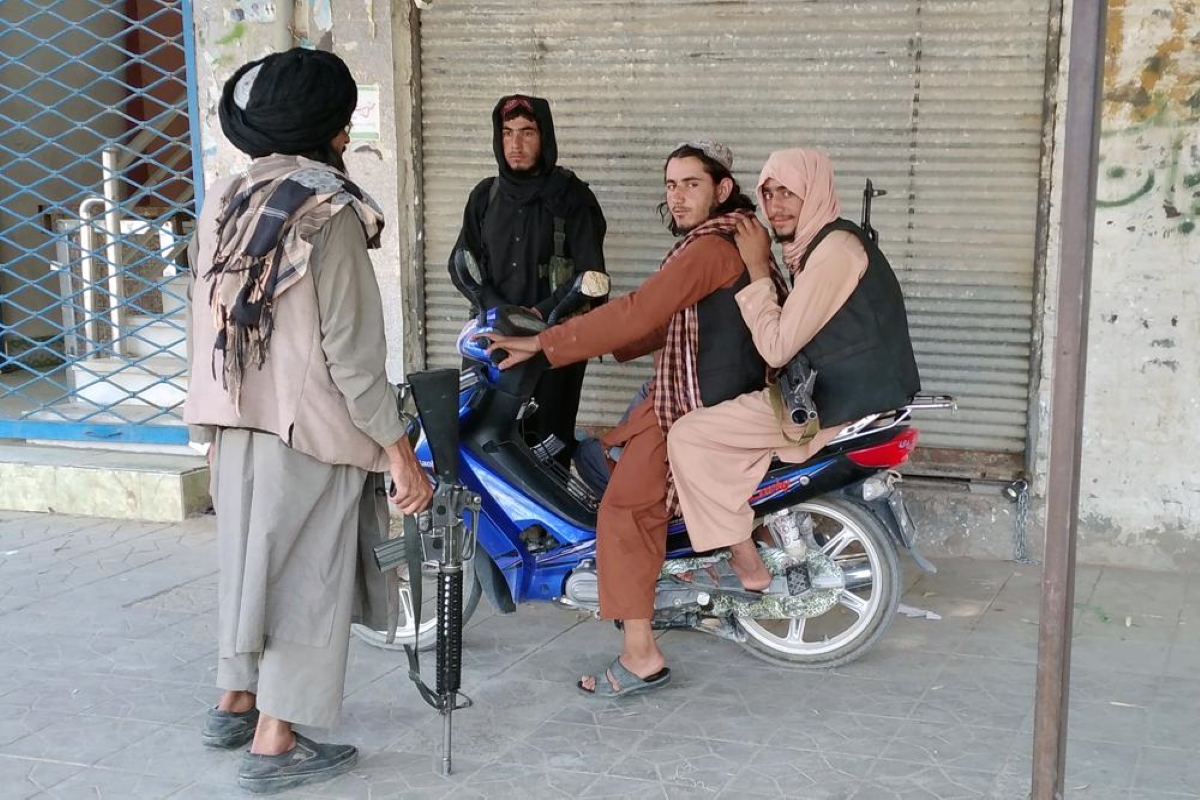With stunning speed, the Taliban captured a police headquarters on Thursday in a provincial capital in southern Afghanistan teetering toward being lost to the insurgents as suspected US airstrikes pounded the area, an official said.
Nine cities have already fallen to the militia’s blitz as Afghan forces fight to retain Lashkar Gah, one of Afghanistan’s largest cities in the Taliban heartland of Helmand province.
Advertisement
President Ashraf Ghani is trying to rally a counteroffensive relying on his country’s special forces, the militias of warlords and American airpower ahead of the U.S. and NATO withdrawal at the end of the month.
The spree of Taliban attacks and speed raises doubts over how long Afghan government can maintain control of what’s left as Kabul still remains guarded from the advance as forces might be confined to the capital and just a few other cities.
In the two-week fight around Lashkar Gah, a suicide car bombing marked the latest wave of onslaught targeting the capital’s regional police headquarters which the Taliban seized a day later as some police officers surrendered to the militants. Others retreated to the nearby governor’s office that’s still held by government forces, said Nasima Niazi, a lawmaker from Helmand.
Niazi said she believed the Taliban attack killed and wounded security force members, but she had no casualty breakdown. Another suicide car bombing targeted the provincial prison, but the government still held it, she said. The Taliban’s other advances have seen the militants free hundreds of its members over the last week, bolstering their ranks while seizing American-supplied weapons and vehicles.
“The Taliban used civilian houses to protect themselves, and the government, without paying any attention to civilians, carried out airstrikes,” she said.
With the Afghan air power depleted and in disarray, the U.S. Air Force is believed to be carrying out some series of strikes to support Afghan forces. Aviation tracking data suggested U.S. Air Force B-52 bombers, F-15 fighter jets, drones and other aircraft were involved in the fighting overnight across the country, according to Australia-based security firm The Cavell Group.
It’s unclear what casualties the U.S. bombing campaign has caused.
Meanwhile, the Taliban appeared to be pressing into the capital of Ghazni province, southwest of Kabul. Wahidullah Jumazada, a spokesman for the provincial governor in Ghazni, acknowledged the insurgents had launched attacks from several directions on the capital, but insisted the government remained in control.
The Taliban posted videos and photos online purporting to show they had made it inside the provincial capital. Some matched known features of Ghazni.
Ghazni provincial council chief Nesar Ahmad Faqiri said government forces still held an intelligence headquarters in the city. Another provincial council member still in Ghazni, Amanullah Kamrani, said the government also held the governor’s guesthouse.
The success of the Taliban offensive also calls into question whether they would ever rejoin long-stalled peace talks in Qatar aimed at moving Afghanistan toward an inclusive interim administration as the West hoped. Instead, the Taliban could come to power by force — or the country could splinter into factional fighting like it did after the Soviet withdrawal in 1989.
In Doha, U.S. envoy Zalmay Khalilzad has met with diplomats from China, Pakistan and Russia in an effort to as a group warn the Taliban they could again be considered international pariahs if they continue their offensive,
State Department spokesman Ned Price said. Khalizad also plans to meet with Afghan government and Taliban officials as the fighting goes on without a sign of it abating.











